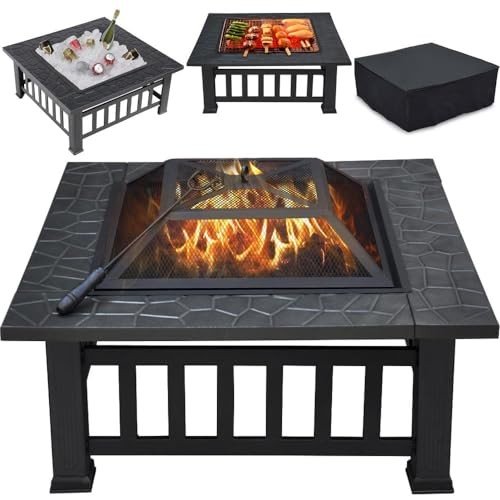The Fireplace: A Warm Embrace of Tradition and Comfort
Fireplaces have actually been an important part of human habitation for centuries, serving as a source of warmth, a meeting place, and a sign of convenience. While the modern variations might differ extremely from their ancient ancestors, the allure of a fireplace withstands. This short article explores the various aspects of fireplaces, including their history, function, types, and upkeep, while also attending to regularly asked questions.
The Evolution of Fireplaces
Fireplaces date back to ancient times when open flames were utilized for cooking, heating, and defense from wildlife. Over the centuries, fireplaces evolved from basic fire pits to the advanced renditions we see today. Here is a short timeline of their advancement:
- Prehistoric Era: Cavemen utilized open flames for heat and cooking. Luxury Fireplaces UK and smoke frequently blew into residences.
- Middle Ages: Stone and brick fireplaces ended up being typical in homes and castles, including chimneys to bring smoke outside.
- Renaissance: Elaborately developed mantels emerged, and fireplaces ended up being centers of social interaction.
- Industrial Revolution: Innovations in heating products resulted in a variety of designs and performances.
- Modern Era: The introduction of natural gas, electric, and bioethanol fireplaces provided cleaner alternatives to traditional wood-burning units.
Table 1: The Evolution of Fireplaces
| Era | Qualities |
|---|---|
| Ancient Era | Open flames for warmth and cooking |
| Middle Ages | Stone and brick structures with early chimneys |
| Renaissance | Elaborate mantels, social centers |
| Industrial Revolution | Diverse designs, introduction of brand-new materials |
| Modern Era | Gas, electric, and bioethanol options |
The Purpose of a Fireplace
Fireplaces serve dual purposes: they offer physical warmth and develop a psychological environment. Property owners often gather around the fireplace to bond, share stories, and enjoy a cozy setting. The glow of a fire can be relaxing, adding to a sense of relaxation and intimacy. Beyond individual pleasure, fireplaces likewise use practical advantages, including:
- Home Heating: Effective heat source, particularly in chillier environments.
- Increased Home Value: A well-designed fireplace can enhance the visual value of a home.
- Emergency situation Heating: In case of power failures, wood-burning fireplaces can function as an essential heat source.
- Visual Appeal: A focal point that adds to interior decor.
Types of Fireplaces
Today, fireplaces can be found in different styles and fuel types, accommodating a varied variety of choices and settings. Here are some typical types:
Wood-Burning Fireplaces:
- Traditional fire pits
- Classic masonry fireplaces
- Need significant maintenance and chimney maintenance
Gas Fireplaces:
- Available in both direct vent and ventless ranges
- Easier to utilize and maintain than wood-burning fireplaces
- Supply instant heat with a flick of a switch
Electric Fireplaces:
- Offer associated heat sources without genuine flames
- Typically developed to mimic traditional fireplaces
- Ideal for smaller sized areas and homes without a chimney
Bioethanol Fireplaces:
- Use bioethanol fuel, providing a sustainable option
- Need no ventilation and can be put anywhere
- Safe and simple to maintain
Table 2: Types of Fireplaces
| Type | Fuel Source | Functions | Maintenance Requirements |
|---|---|---|---|
| Wood-Burning | Wood | High ambiance, heat source | Regular chimney cleaning |
| Gas | Gas or propane | Instant heat | Minimal, occasional servicing |
| Electric | Electrical energy | Easy setup | Extremely low upkeep |
| Bioethanol | Bioethanol fuel | Ventless, portable | Low, generally cleaning up |
Maintenance and Safety Considerations
Owning a fireplace includes specific duties, particularly concerning its safe operation and long-term upkeep. Here are very important upkeep tips and security standards:
Maintenance Tips:
- Annual Inspection: Always have your chimney and fireplace inspected at least when a year by a certified service technician.
- Regular Cleaning: Clean out ashes and debris after each usage, and make sure the flue is open before starting a fire.
- Inspect for Cracks: Inspect masonry for fractures or damage to avoid structural issues.
- Usage Proper Fuel: Only use dry, seasoned wood for wood-burning fireplaces; do not burn cured wood.
Safety Guidelines:
- Install Smoke Detectors: Ensure smoke detectors are functional, evaluating them month-to-month and replacing batteries as needed.
- Keep a Fire Extinguisher: Have one nearby, even if a fireplace is used infrequently.
- Supervise Flames: Never leave a fire ignored, and ensure kids and animals are kept track of around the fireplace.
Frequently Asked Questions (FAQs)
1. How can I lower smoke from a wood-burning fireplace?
To minimize smoke, usage dry, seasoned wood, and make sure that your chimney is tidy and unblocked.
2. Is it safe to use gas fireplaces during a gas leakage?
Never ever use a gas fireplace during a gas leak. Instantly leave the area and contact gas services for aid.
3. Can I set up an electric fireplace myself?
Electric fireplaces are typically easy to set up, however it is recommended to speak with experts to guarantee safety and compliance with local structure codes.
4. What is the best type of fireplace for small spaces?
Electric fireplaces or bioethanol models are frequently best for small spaces, as they do not need substantial ventilation or structural adjustments.
Fireplaces have actually transcended their original function of supplying heat to end up being treasured components of home style and family life. They evoke memories of warmth, events, and togetherness while offering practical advantages that enhance modern living. By understanding the numerous kinds of fireplaces, their upkeep, and safety practices, property owners can take pleasure in the classic appeal of this cherished feature for generations to come.

